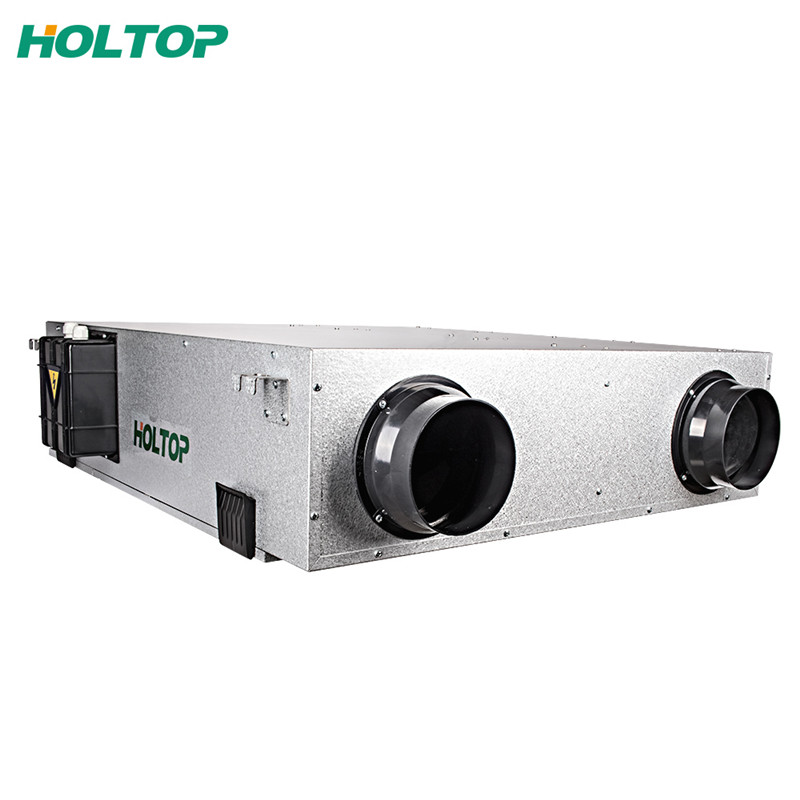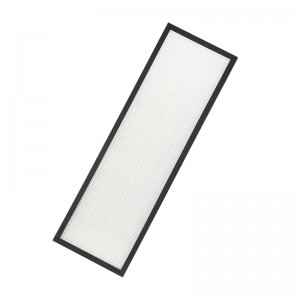Energy recovery ventilators expel stale indoor air from your home and allow fresh outdoor air to enter.
Additionally, they filter the outside air, capturing and eliminating contaminants, including pollen, dust, and other pollutants, before they can enter your house. This process improves indoor air quality, making the air inside your home healthier, cleaner, and more comfortable.
But perhaps the biggest reason why homeowners choose to install energy recovery ventilators (ERVs) in their homes is that they save money.
If you plan to install an ERV unit in your house, you might be looking for a definitive answer to whether an energy recovery ventilator helps you save money.
Does an Energy Recovery Ventilator Save Money?
When the heat or AC is running, it doesn’t make sense to open the windows and doors. However, tightly air-sealed homes can get stuffy, and you have no option but to open a window to expel contaminants such as germs, allergens, dust, or smoke.
Fortunately, an ERV promises a continuous stream of fresh air without wasting any money on additional heating or cooling costs from an open door or window. Since the unit brings in fresh air with minimal energy loss, your building will be much more comfortable, and your utility bills will be lower.
The primary way an ERV reduces your monthly utility bill is by transferring airborne heat energy to warm incoming fresh air in winter and reversing the transfer process in summer.
For instance, the device extracts heat from the incoming fresh airstream and sends it back out through the exhaust vent. Thus, the fresh air coming inside is already cooler than it would otherwise be, meaning your HVAC system has to work less to draw power to cool the air to bring it to a comfortable temperature.
During winter, the ERV extracts from the outgoing stale airstream that would otherwise be wasted and uses it to preheat the incoming fresh air. So, again, your HVAC system uses less energy and power to warm the indoor air to the preferred temperature.
How Much Money Does an Energy Recovery Ventilator Save?
According to the US Department of Energy, an energy recovery ventilator can recover up to 80% of the heat energy that would otherwise be lost and use it to preheat the incoming air. The unit’s ability to exhaust or recover heat energy generally translates to at least a 50% reduction in HVAC costs.
However, an ERV will draw a bit of extra power on top of your existing HVAC system to function correctly.
What Other Ways Does an ERV Save Money?
Apart from improving the indoor air quality in your home, reducing the load on your HVAC system, and lowering energy bills, energy recovery ventilators offer several other benefits that can help you save money.
Radon Reduction
An ERV can lower radon levels by introducing fresh, clean air and producing positive air pressure.
Negative air pressure in lower stories of buildings creates a force that attracts soil gases, such as radon, inside the property’s structure. Therefore, if the negative air pressure decreases, the radon level will also automatically fall.
Many organizations, including the National Radon Defense, have installed ERVs as a solution where traditional methods such as active soil depressurization were not economically viable or practical.
Such situations are common in earth homes, homes with challenging slab accessibility or HVAC returns beneath the slab, and other difficult situations. Many individuals prefer installing an ERV instead of traditional radon reduction systems, costing up to $3,000.
Even though the initial cost of purchasing and installing an ERV might also be high (up to $2,000), this investment can help you increase your property’s value.
For example, according to the US Green Building Council, green buildings can increase asset value by ten percent and return on investment by 19 %.
Addressing Humidity Problems
An energy recovery ventilator can help address humidity problems. Thus, these systems can be advantageous if you live in a region that experiences long and humid summers.
High humidity levels can overwhelm even the most advanced air conditioners, causing your cooling system to waste energy and work less efficiently. On the other hand, energy recovery ventilators are designed to control moisture.
These units can assist your cooling equipment with energy-saving while reducing energy levels. Consequently, they can help you and your family stay comfortable and cool.
Note: While energy recovery ventilators help address humidity problems, they are not substitutes for dehumidifiers.
Better Odor Control
By getting rid of airborne contaminants in your home and filtering the incoming air, an ERV unit also helps with odor control.
Odors from pets, cooking ingredients, and other sources will decrease considerably, allowing the air inside your home to smell fresh and clean. This feature eliminates the need to buy air fresheners that have a short-term effect on odor control.
Improved Ventilation
In some instances, HVAC systems might not be bringing in sufficient outside air to offer proper ventilation. Since an ERV minimizes the energy required to condition outside air, it improves ventilation air intake, thus enhancing indoor air quality.
Improved indoor air quality leads to better concentration, high-quality sleep, and fewer respiratory problems, ultimately translating to lower medical bills and higher savings.
Energy recovery ventilators also help you adhere to the most recent building codes without increasing energy consumption.
How to Ensure Your ERV Offers the Maximum Value for Your Money
While an ERV generally has a payback period of two years, there are ways to reduce the timeframe and get a higher return on investment. These include:
Have a Licensed Contractor Install the ERV
Remember that costs can increase quickly, especially if you have no experience installing an ERV before.
Thus, we strongly suggest you get a professional, licensed, and experienced ERV contractor to carry out the installation process. You should also review your potential contractor’s body of work to decide if you are getting the appropriate level of service.
Also, ensure you have a copy of the energy recovery ventilator recommended installation requirements before beginning the process. This oversight allows you to make sure your project does not cost you more money in the long run and lowers the payback period.
Keep Up with Your ERV’s Maintenance
Thankfully, an ERV unit does not require high levels of maintenance. All you have to do is clean and replace the filters every two to three months. However, if you have pets in the house or you smoke, you might have to replace the filters more frequently.
A minimum efficiency reporting value (MERV) filter typically costs around $7-$20, depending on where you buy it. You can get an even lower price if you purchase these filters in bulk.
Filters usually have a rating of 7-12. A higher rating allows fewer pollens and allergens to pass through the filter. Changing the filter every few months will cost you around $5-$12 per year.
We suggest you shop around to get the best price before investing in a large box of filters. Keep in mind that you will be changing the filters four to five times every year. Therefore, buying a pack of filters is the best way to go.
It would help if you also got your unit inspected every few months. Ideally, you should have this done by the same company who installed the unit to prevent any issues.
In addition, you should also pay attention to the unit’s core and clean it every year using a vacuum cleaner. Please don’t remove the core to wash it, as it can damage your unit. If you need to, speak to your service provider for guidance on this matter.
Correctly Size the ERV According to Your Needs
Energy recovery ventilators are available in several different sizes, which in technical terms is known as cubic feet per minute (CFM). Thus, you need to choose the correct size to allow your unit to work efficiently without making your home too humid or too dry.
To get the minimum CFM requirements, take the square footage of your house (including the basement) and multiply it with the ceiling’s height to get the cubic volume. Now divide this figure by 60 and then multiple by 0.35.
You can also oversize your ERV unit. For instance, if you want to supply 200 CFM of ventilation to your home, you can opt for an ERV that can move 300 CFM or more. However, you shouldn’t opt for a unit rated at 200 CFM and run it at the maximum capacity because it reduces its efficiency, leading to more energy wastage and higher utility bills.

Summary
An energy recovery ventilator can help you save money in several different ways.
Primarily, it exhausts or recovers heat energy leading to around a 50 percent reduction in monthly utility bills every season because it reduces the load on your HVAC equipment, allowing it to last longer and work more efficiently.
Finally, it also helps in other areas such as odor control, radon reduction, and humidity problems, all of which have costs associated.
If you are interested in Holtop heat recovery ventilators, please send us an email to sale@holtop.com or send inquires to us.
For more information, please visit:https://www.attainablehome.com/energy-recovery-ventilators-money-savings/
Post time: Jul-25-2022










